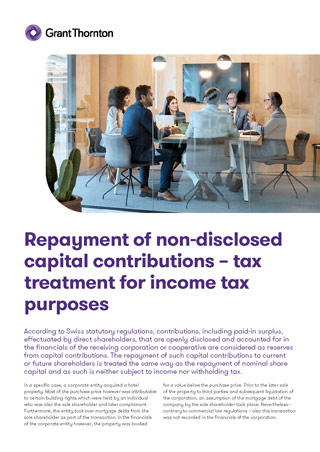-
Audit Financial Services
More security, more trust: Audit services for banks and other financial companies
-
Audit Industry, Services, Institutions
More security, more trust: Audit services for national and international business clients
-
Corporate Tax
National and international tax consulting and planning
-
Individual Tax
Individual Tax
-
Indirect Tax/VAT
Our services in the area of value-added tax
-
Transfer Pricing
Our transfer pricing services.
-
M&A Tax
Advice throughout the transaction and deal cycle
-
Tax Financial Services
Our tax services for financial service providers.
-
Financial Services
Consultancy services that generate real added value for financial service providers.
-
Advisory IT & Digitalisation
Generating security with IT.
-
Forensic Services
Nowadays, the investigation of criminal offences in companies increasingly involves digital data and entire IT systems.
-
Regulatory & Compliance Financial Services
Advisory services in the area of financial market law.
-
Transaction Services / Merger & Acquisition
Successfully handling transactions with good advice.
-
Legal Services
Experts in commercial law.
-
Trust Services
We are there for you.
-
Business Risk Services
Sustainable growth for your company.
-
Abacus
Grant Thornton Switzerland Liechtenstein has been an official sales partner of Abacus Business Software since 2020.
-
Accounting Services
We keep accounts for you.
-
Payroll Services
Leave your payroll accounting to us.
-
Real Estate Management
Leave the management of your real estate to us.
-
Apprentices
Career with an apprenticeship?!

In a specific case, a corporate entity acquired a hotel property. Most of the purchase price however was attributable to certain building rights which were held by an individual who was also the sole shareholder and later complainant. Furthermore, the entity took over mortgage debts from the sole shareholder as part of the transaction. In the financials of the corporate entity however, the property was booked for a value below the purchase price. Prior to the later sale of the property to third parties and subsequent liquidation of the corporation, an assumption of the mortgage debt of the company by the sole shareholder took place. Nevertheless – contrary to commercial law regulations – also this transaction was not recorded in the financials of the corporation.
The cantonal tax authorities subsequently assessed certain liquidation proceeds as taxable income for the sole shareholder. The complainant defended herself against this verdict up to the Federal Court which concluded that the assumption of debt by the shareholder qualified as a hidden capital contribution into the company. The court further found that in contrast to the literal wording of the withholding tax law, which explicitly requires the recognition of capital contributions in a separate account, there is no such wording based on income tax law. The Federal Court closed that there is no convincing argument for a deviation from the wording of the income law to link the income tax exemption of a distribution of – unrecognized, hidden – reserves to separate accounting of such reserves in the financials of the contributing company. In the specific case, the Federal Court therefore recognized that the liquidation proceeds, as received by the individual, derived from repayments of hidden capital contributions. As a result, the repayment was not subject to income tax.
Consequently, in the specific case a withholding tax of 35% was levied on the liquidation proceeds, whereas for income tax purposes a tax-exempt repayment of capital contributions was recognized. The court left open on the income tax declaration specifics, whereby an income tax-exempt distribution with simultaneous refund of withholding tax in the individuals tax return is to be claimed.
The contribution as well as the distribution of disclosed and non-disclosed capital contributions poses a variety of tax aspects. Careful planning is a must to ensure tax beneficial treatment. Grant Thornton Switzerland/Liechtenstein is your competent partner to deal with such tax matters.


